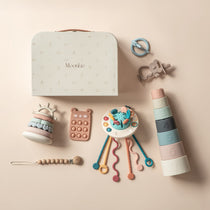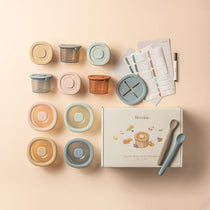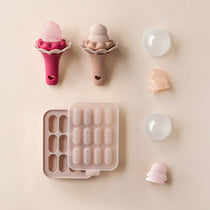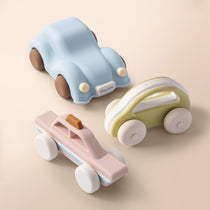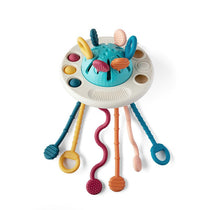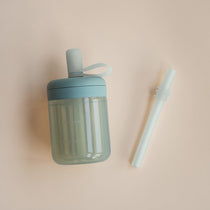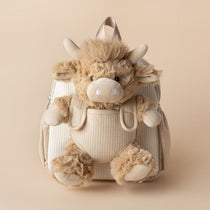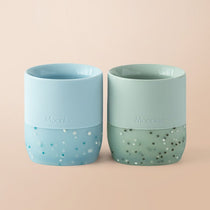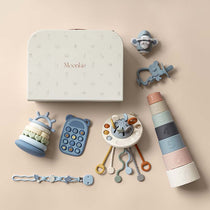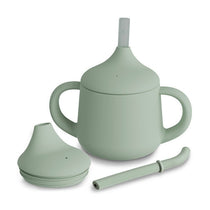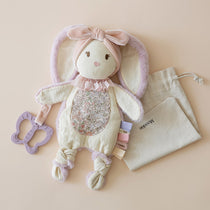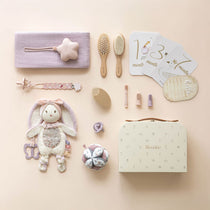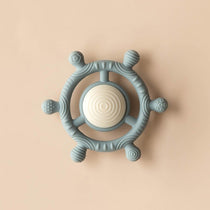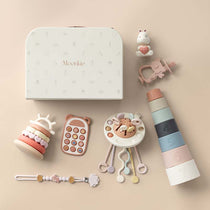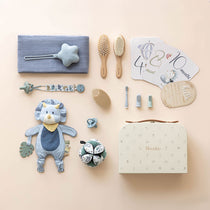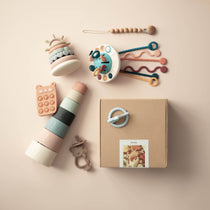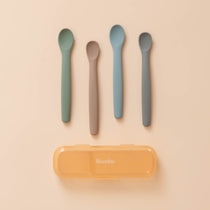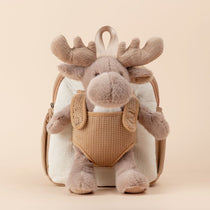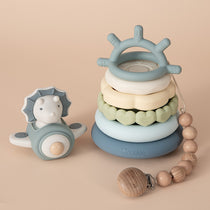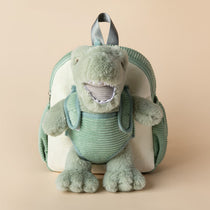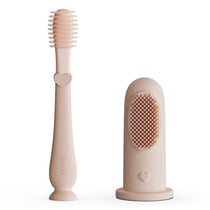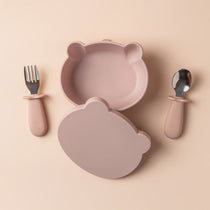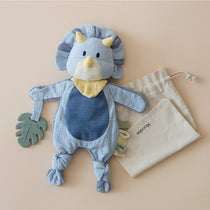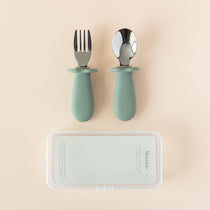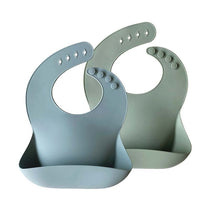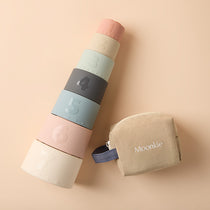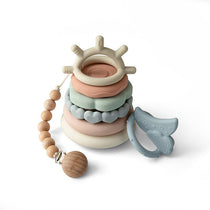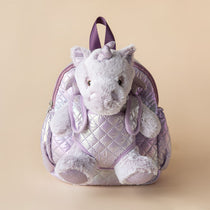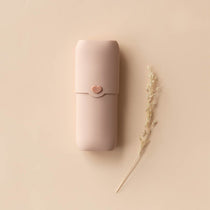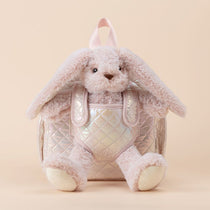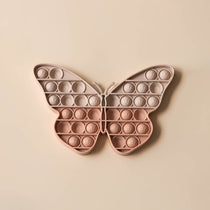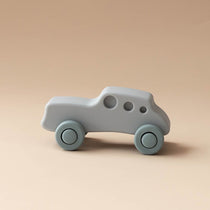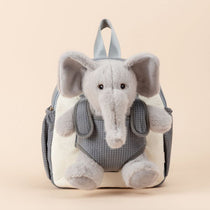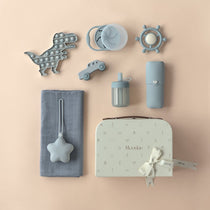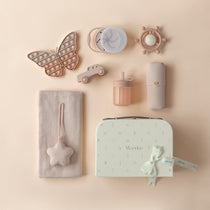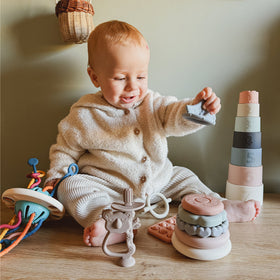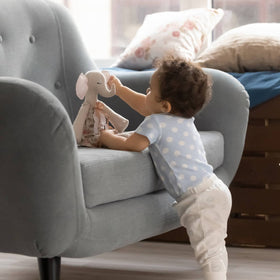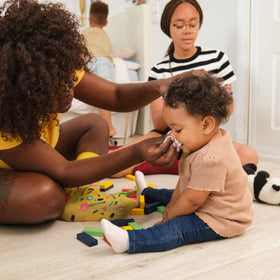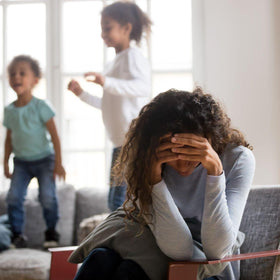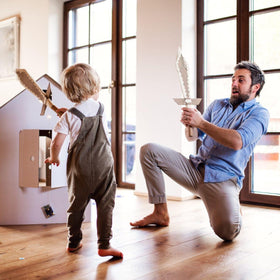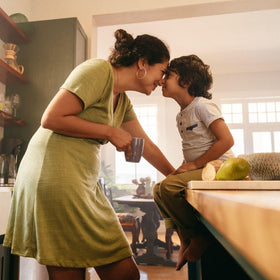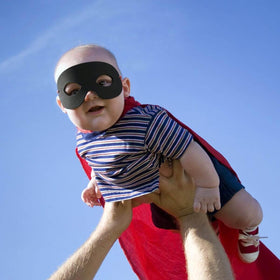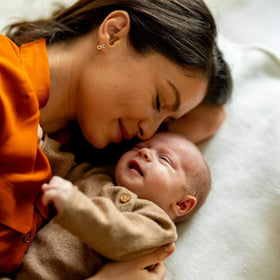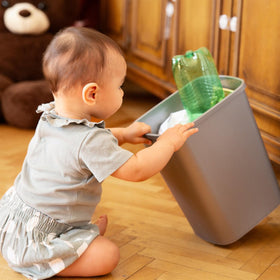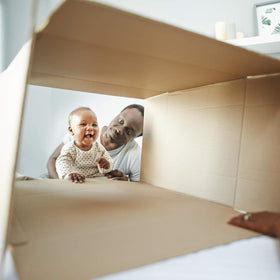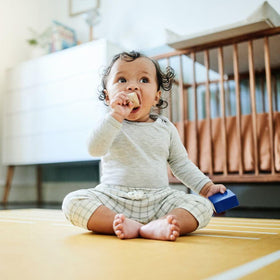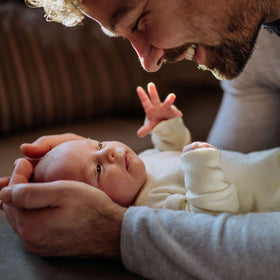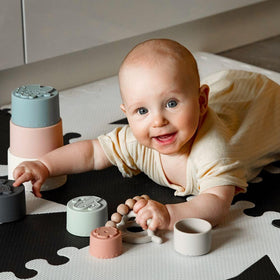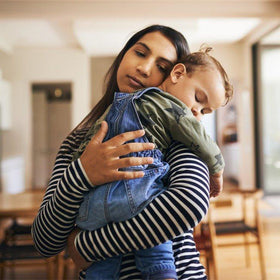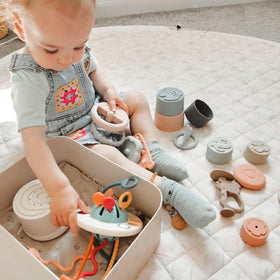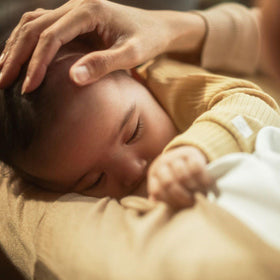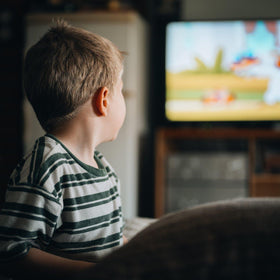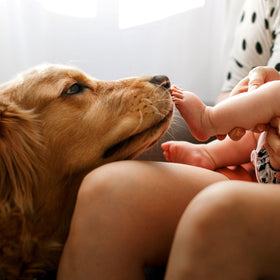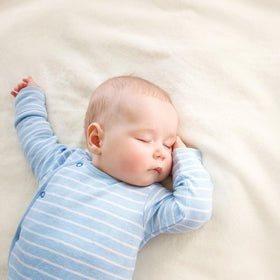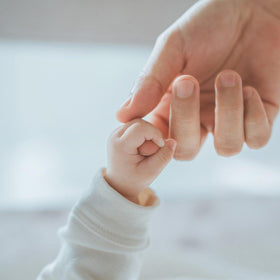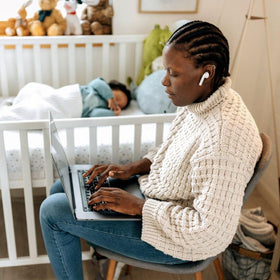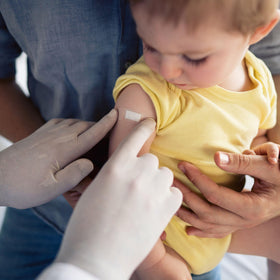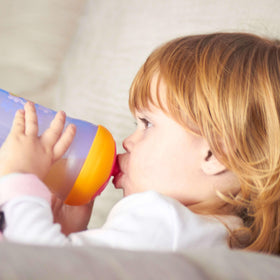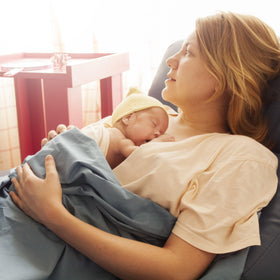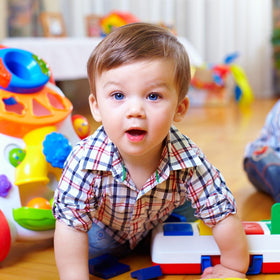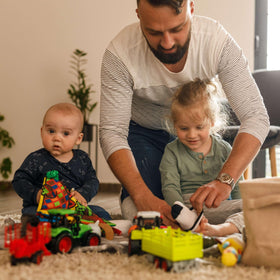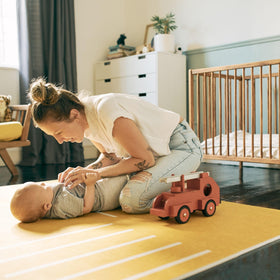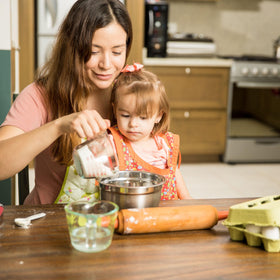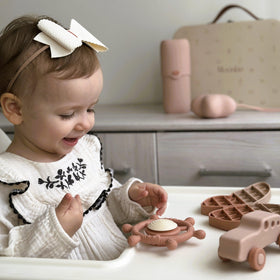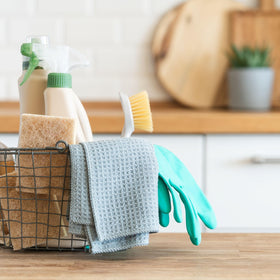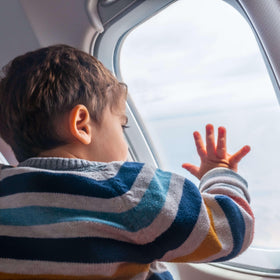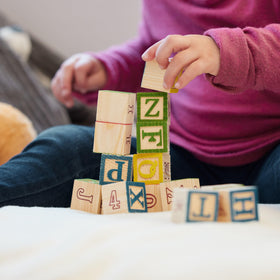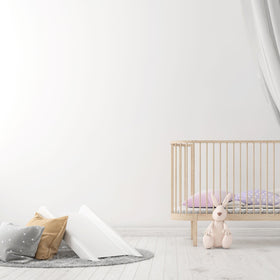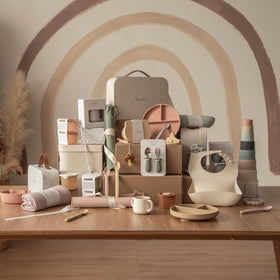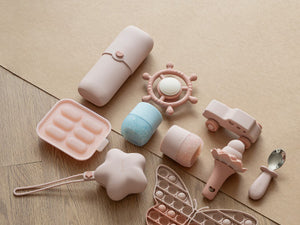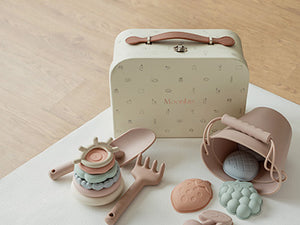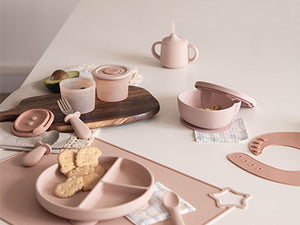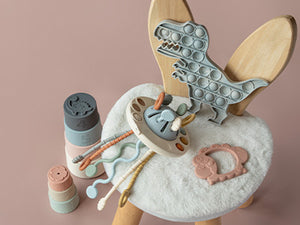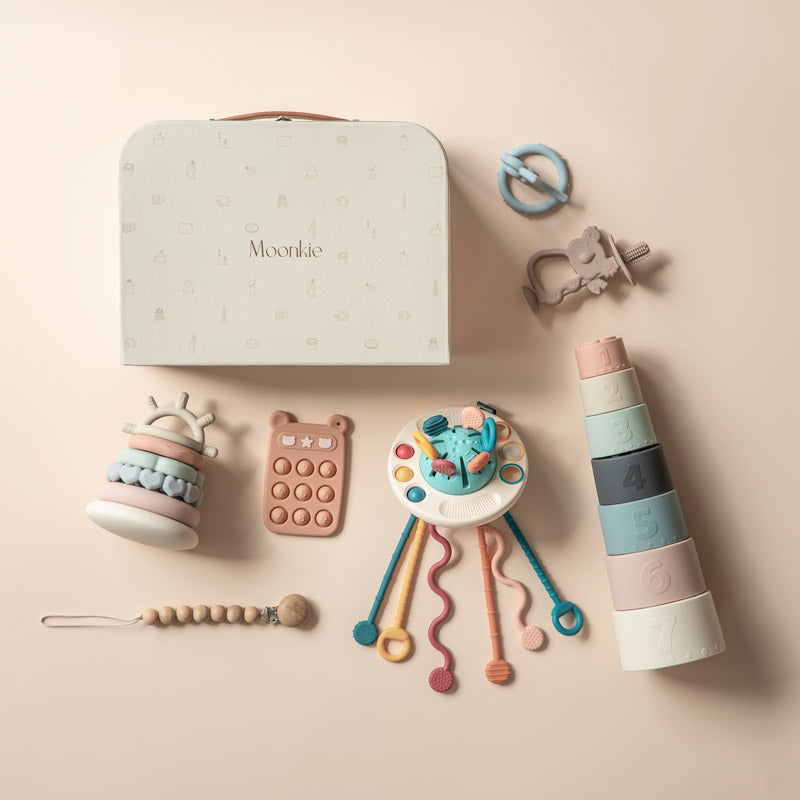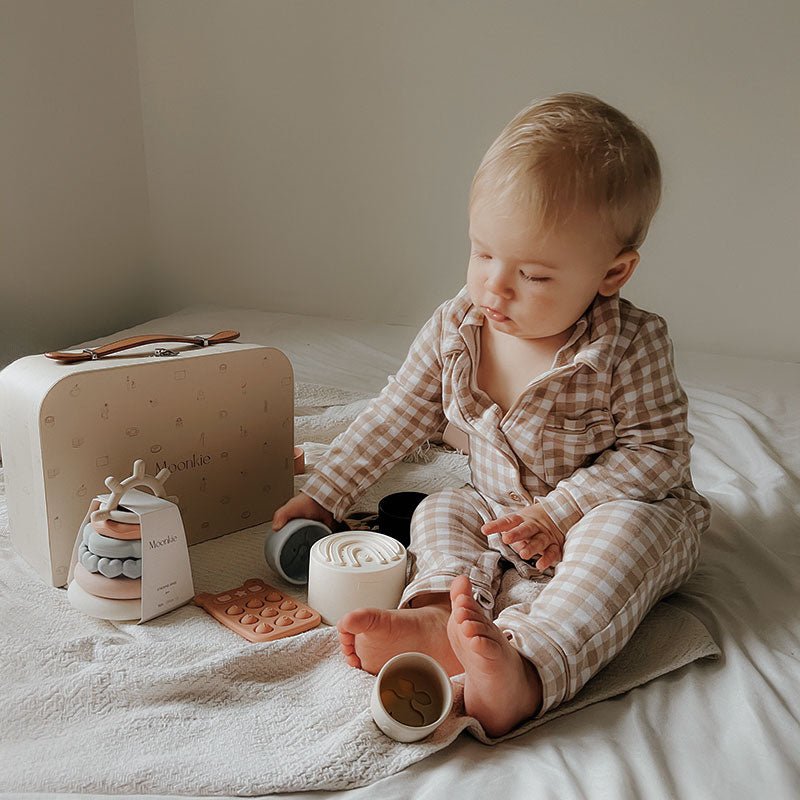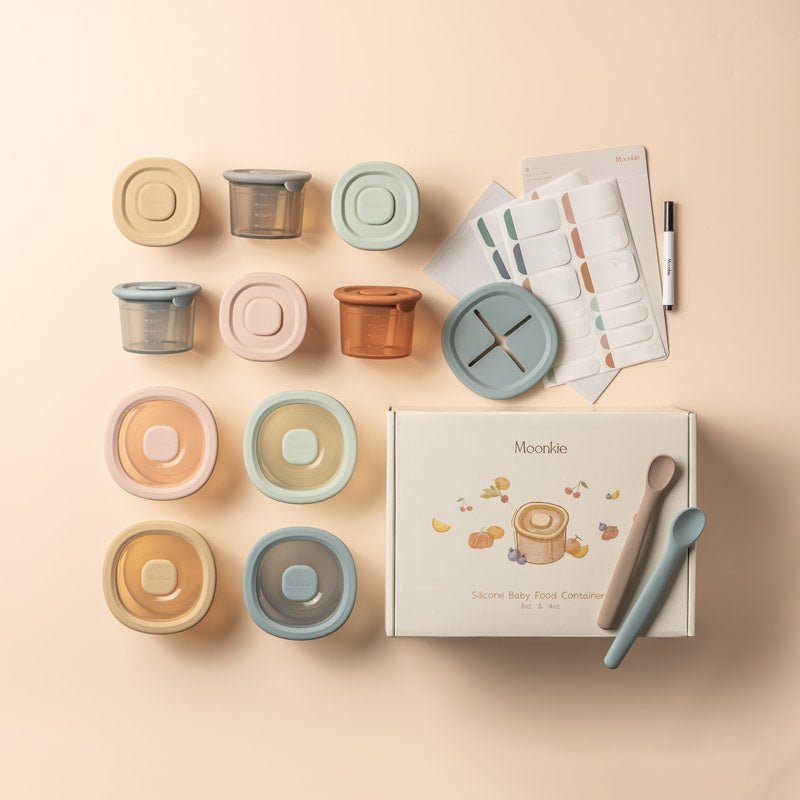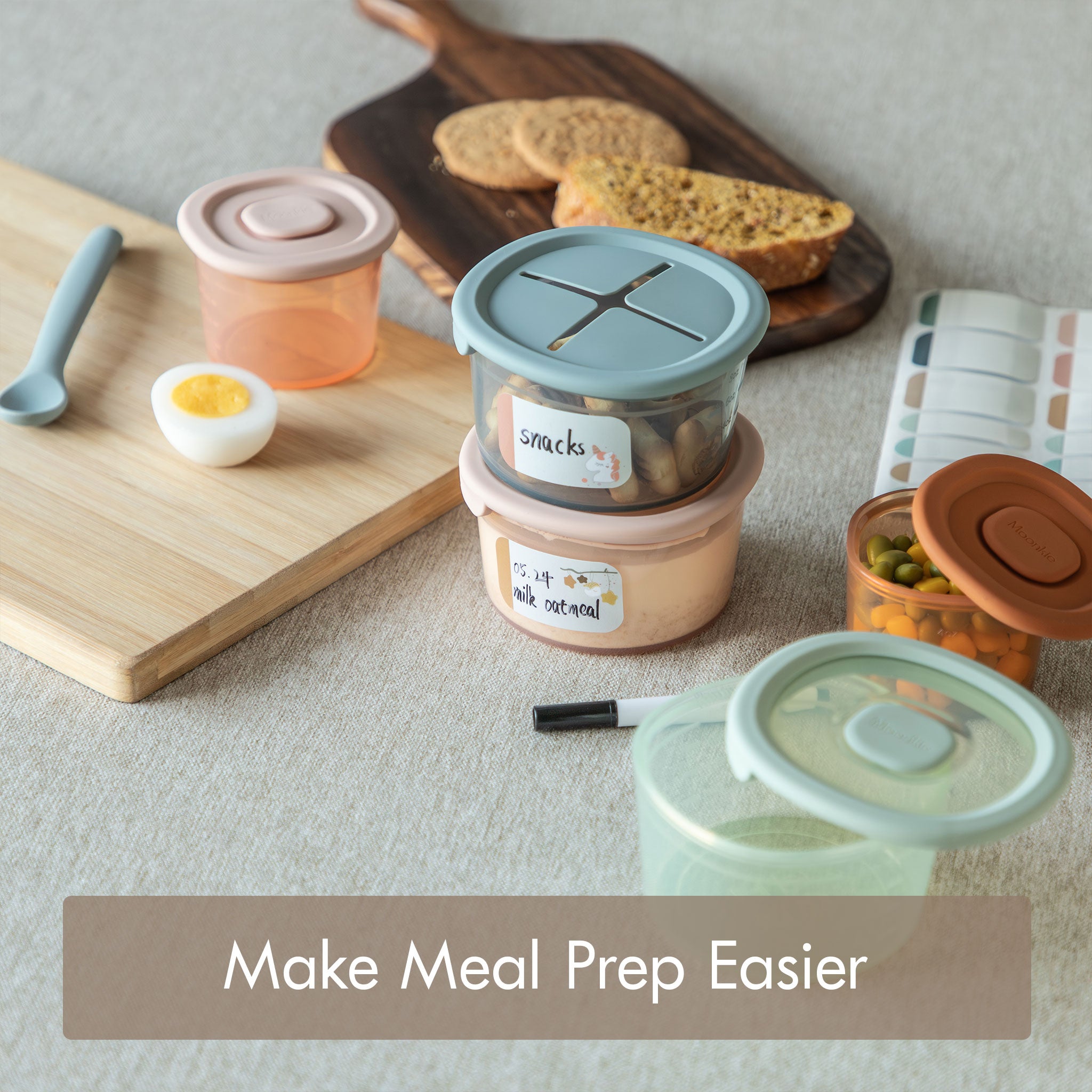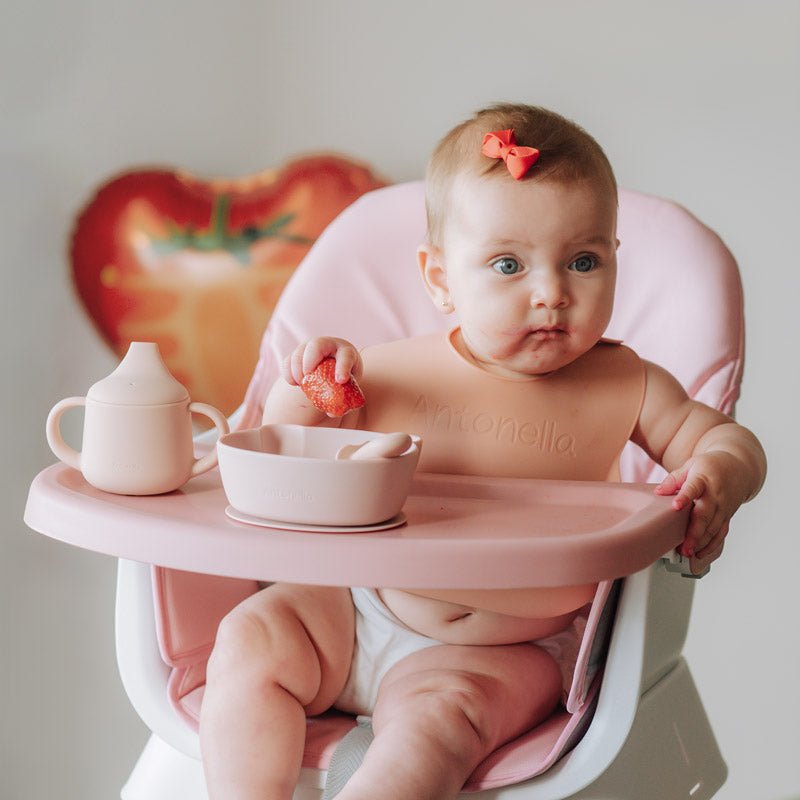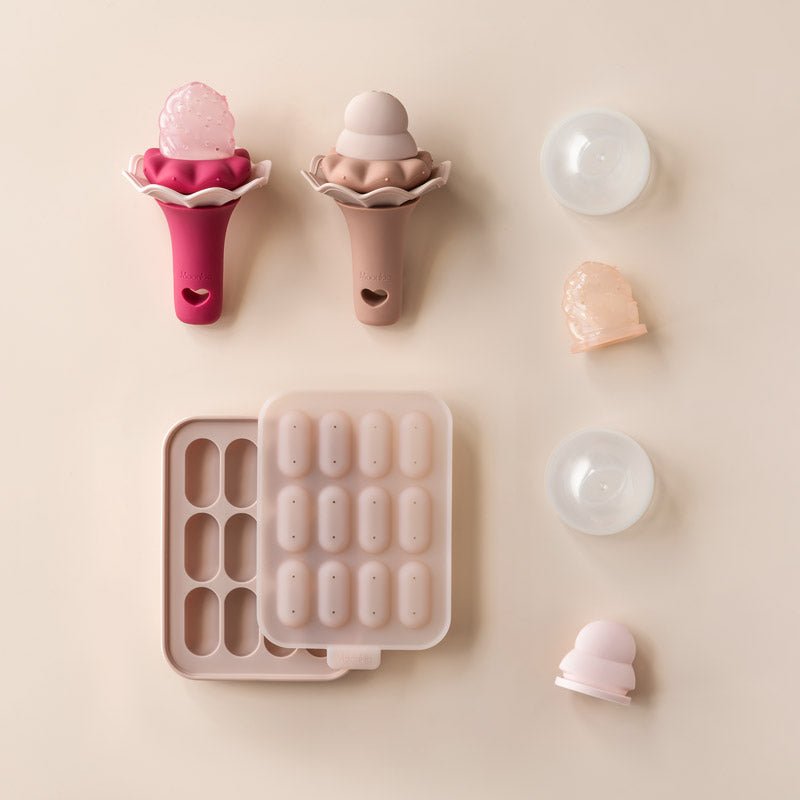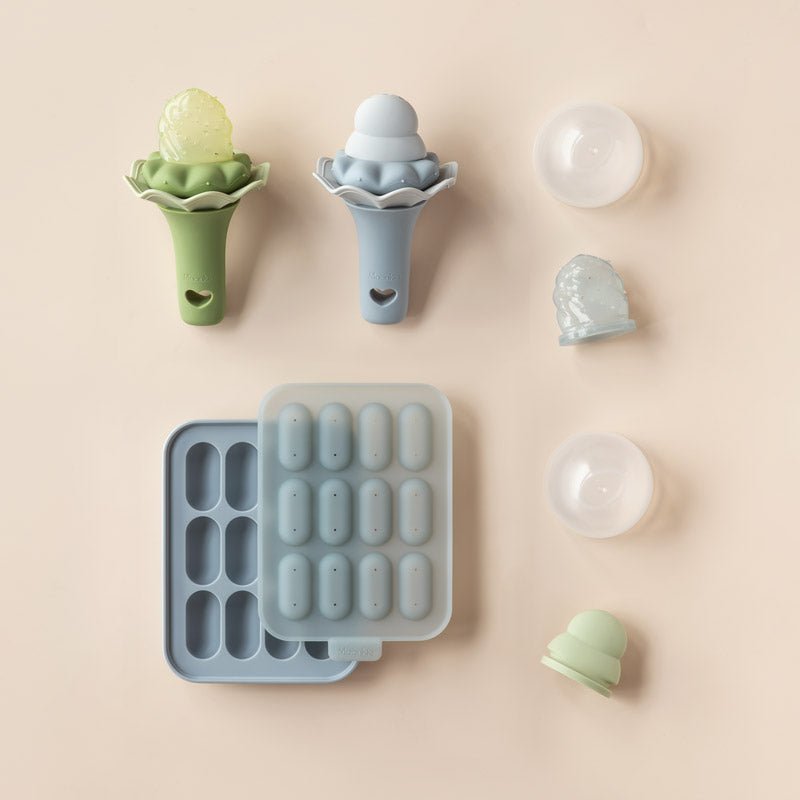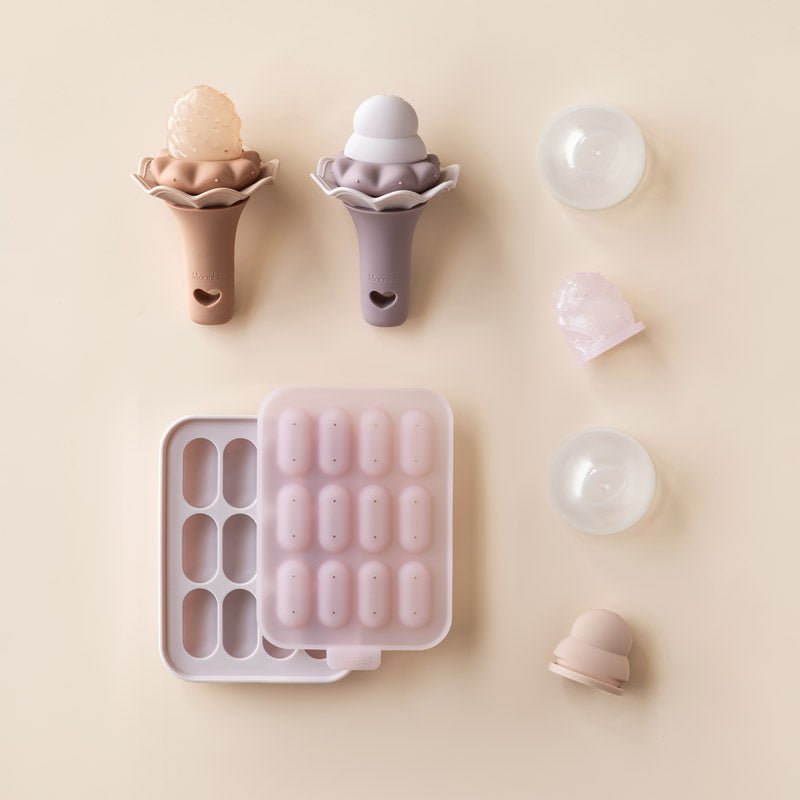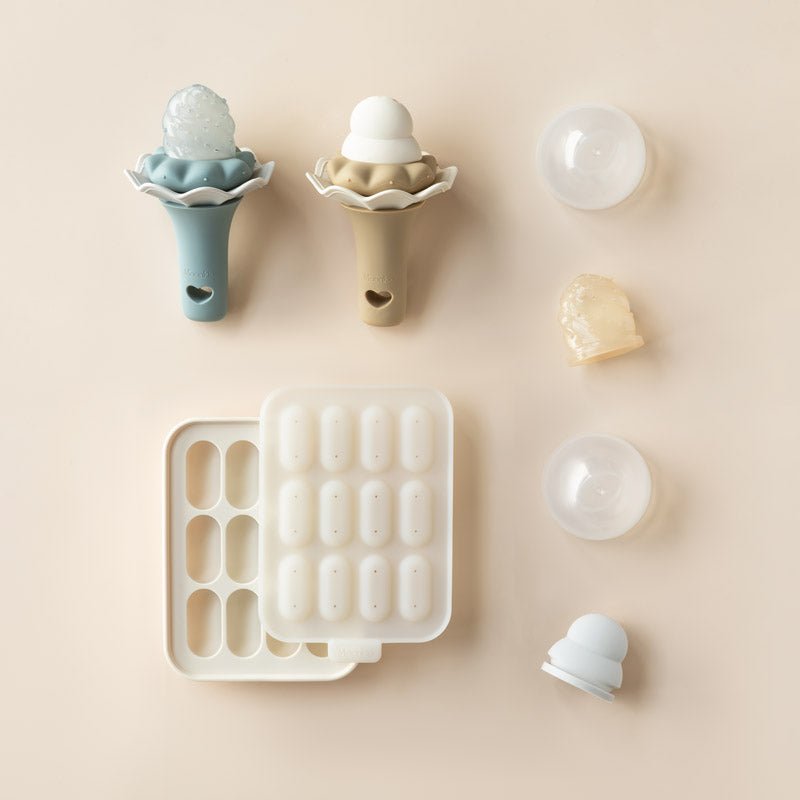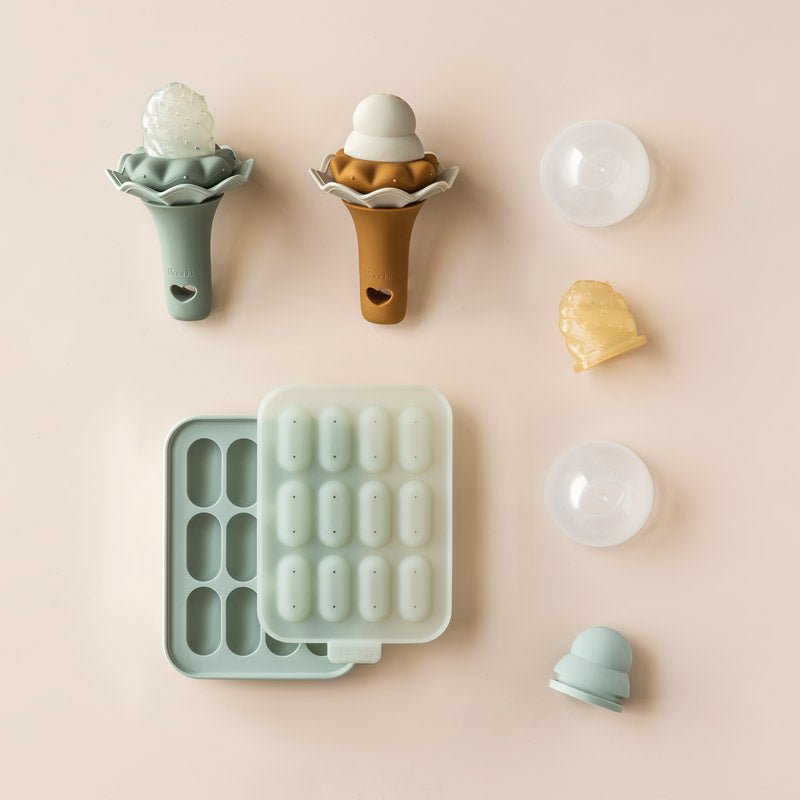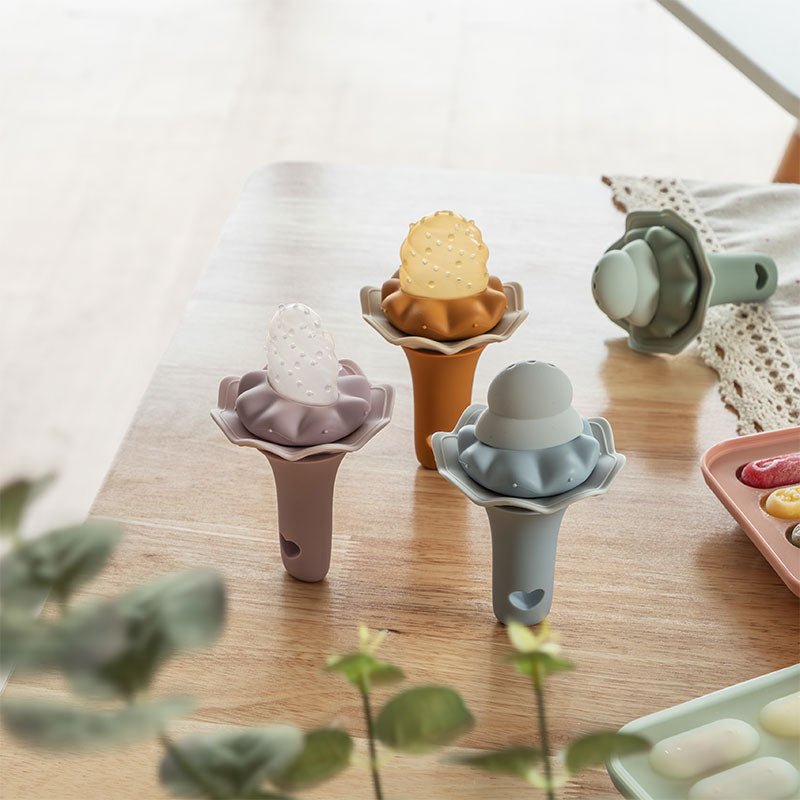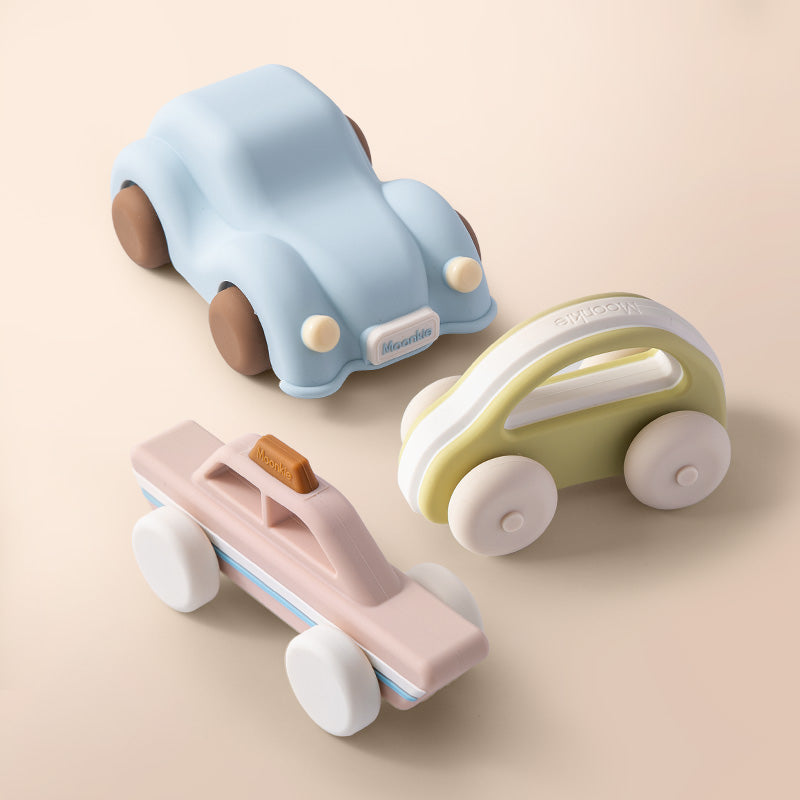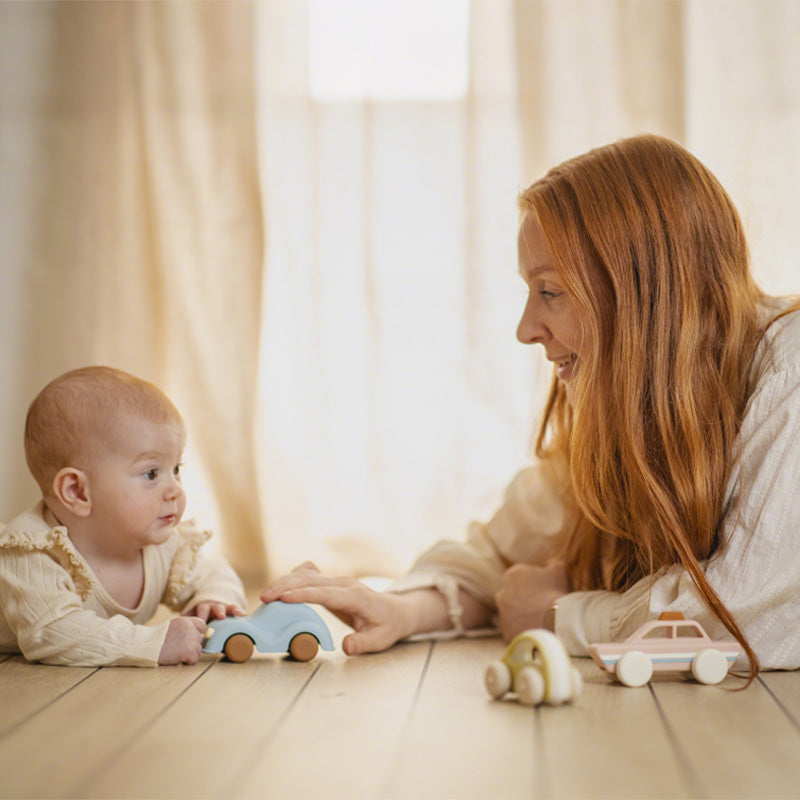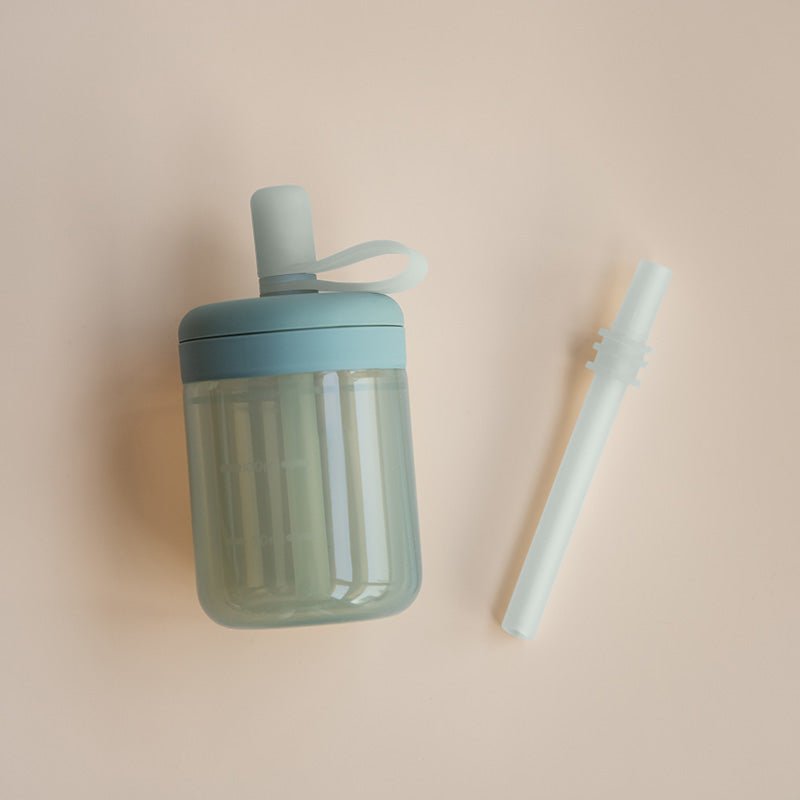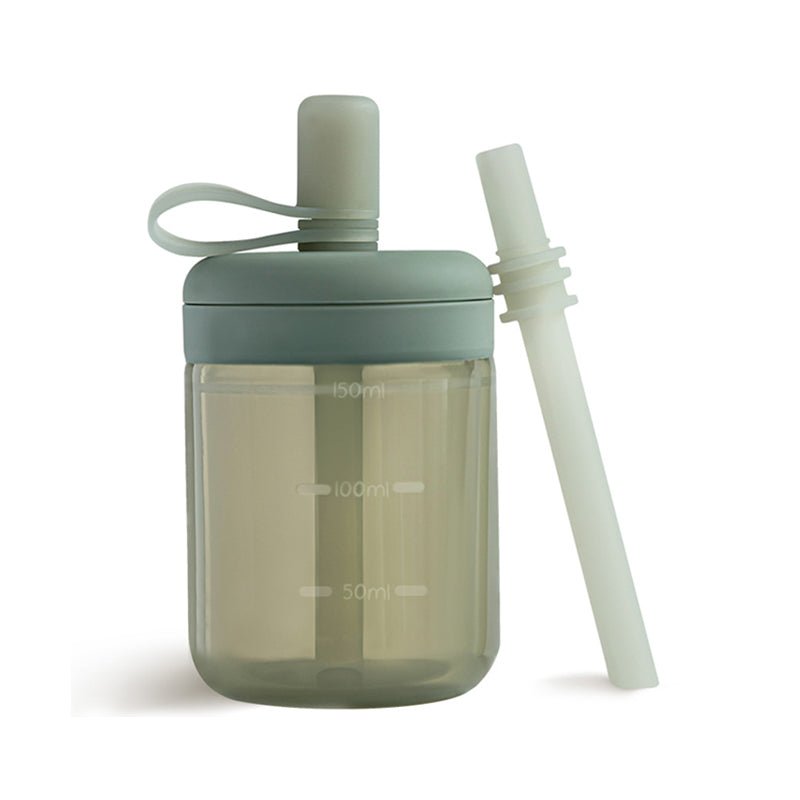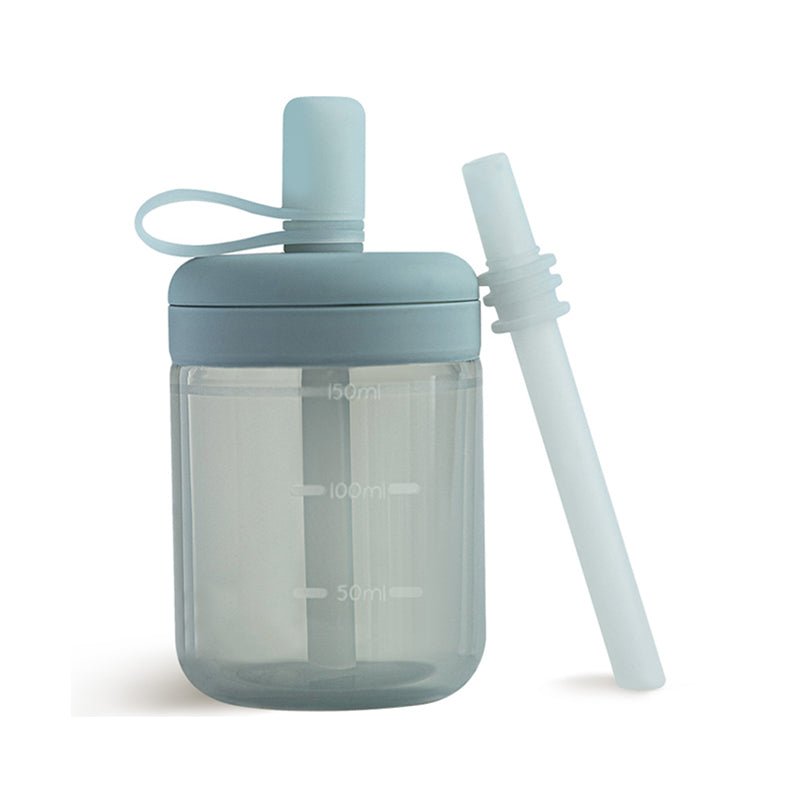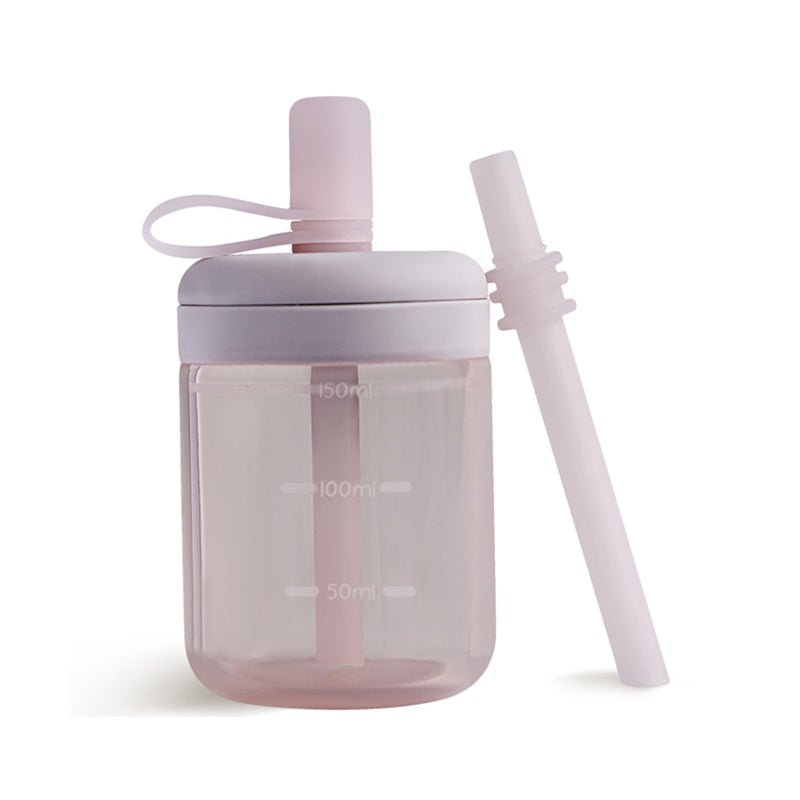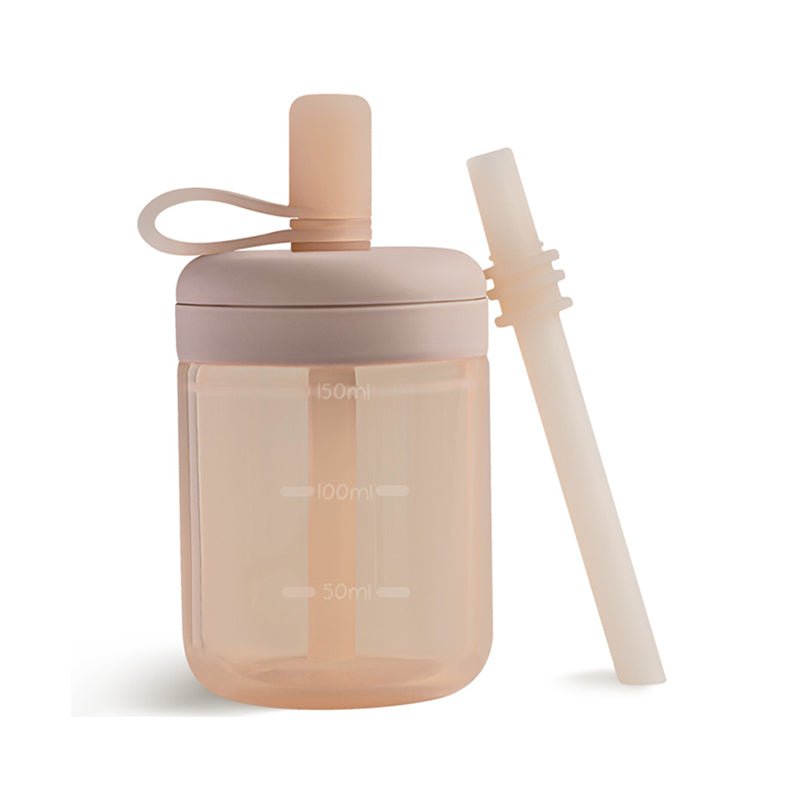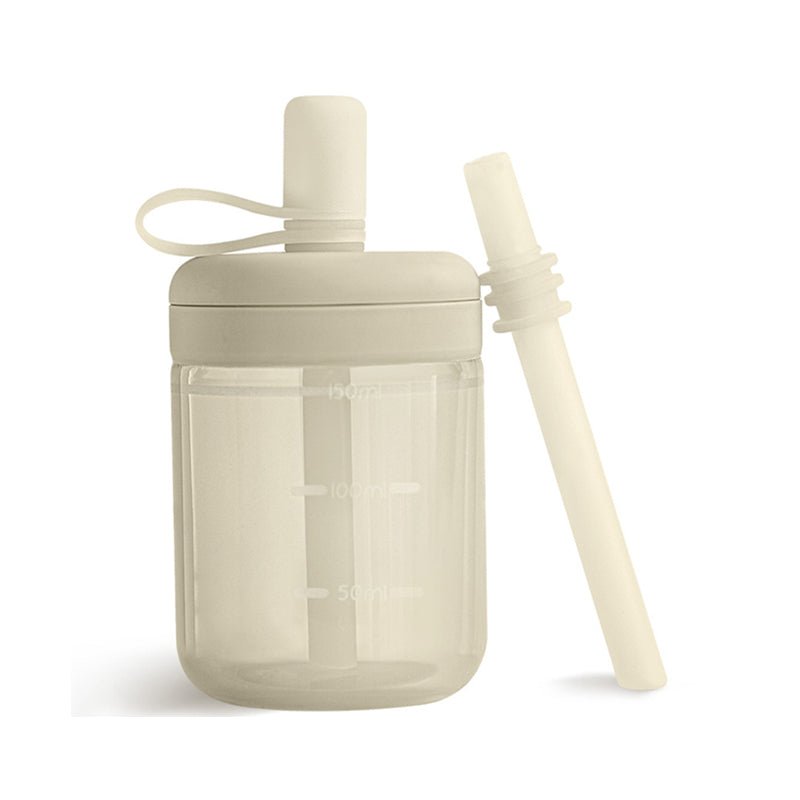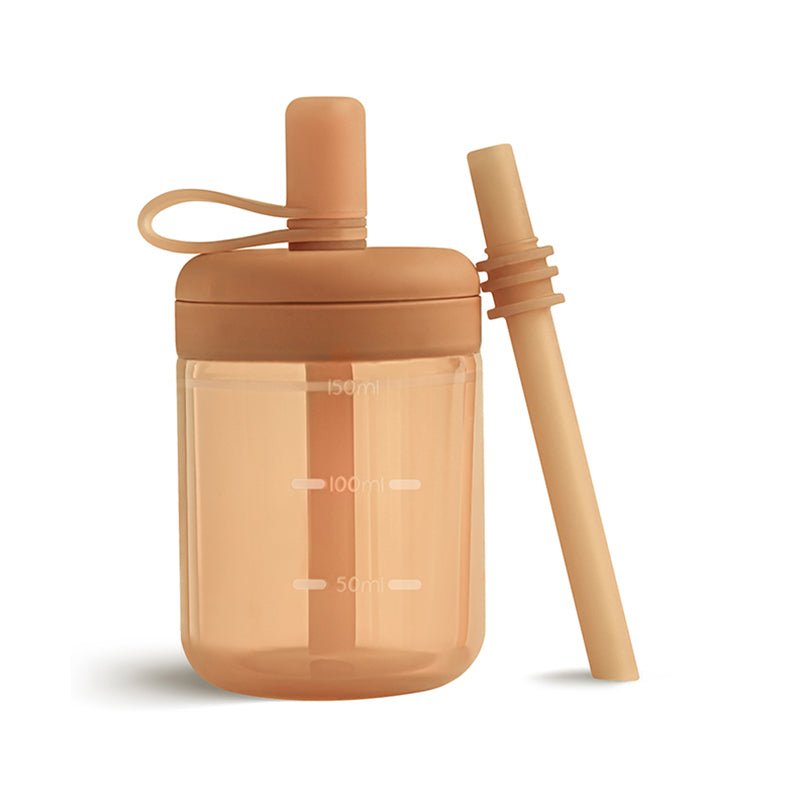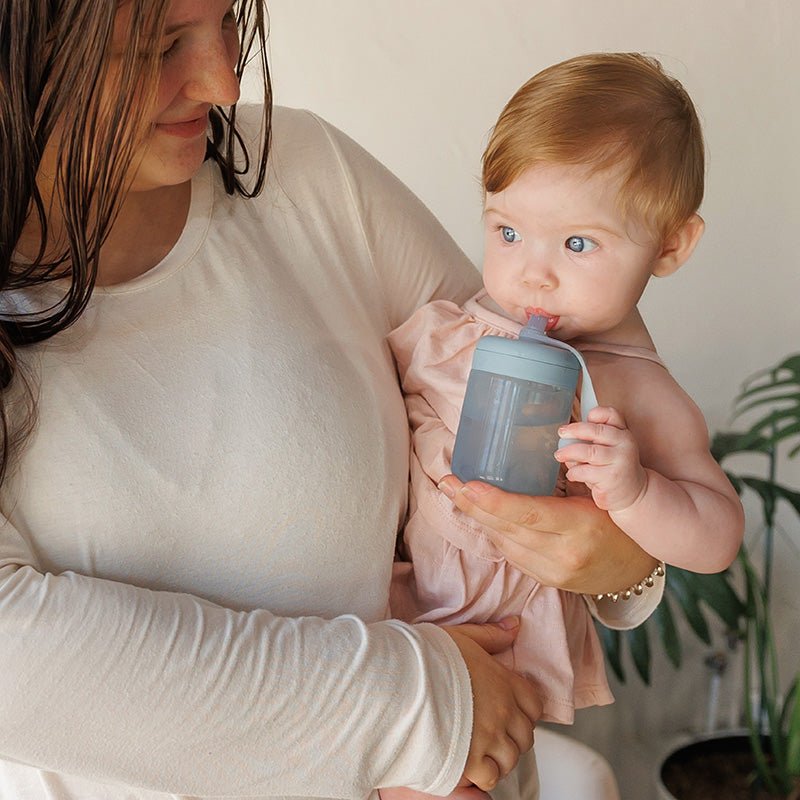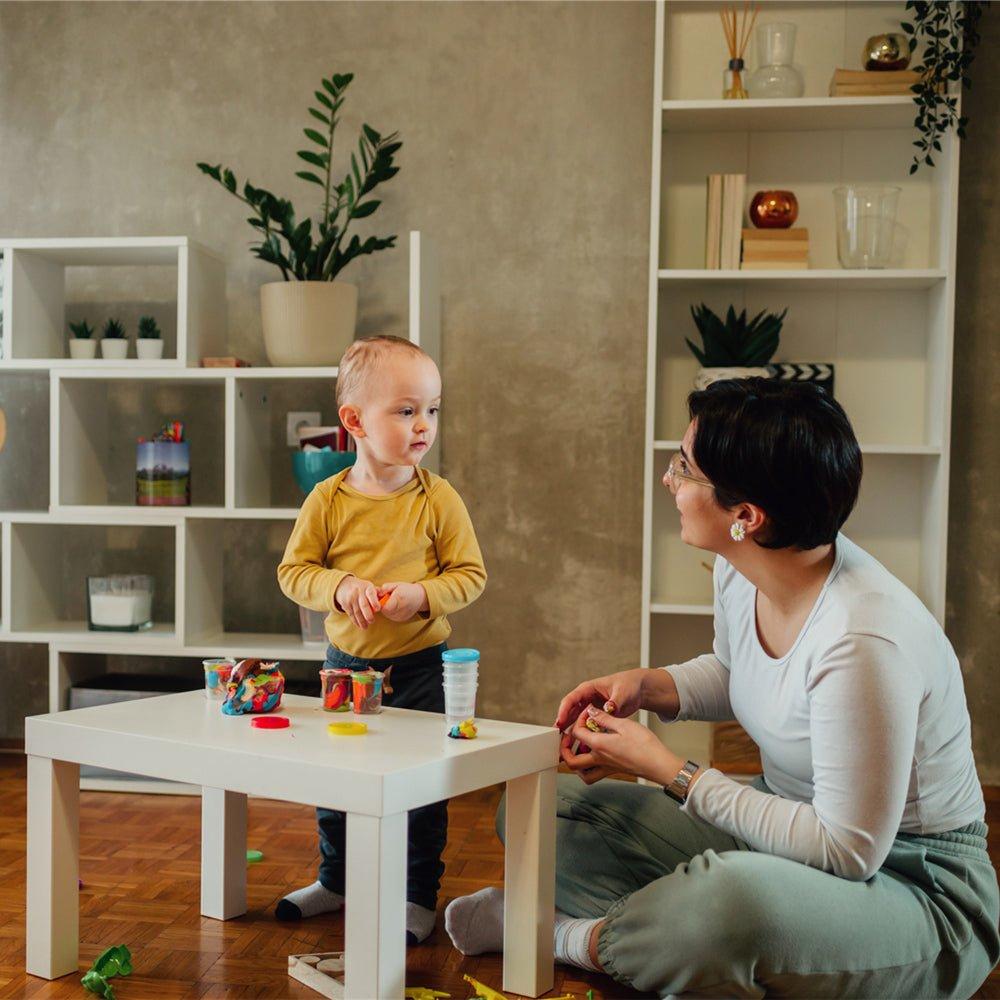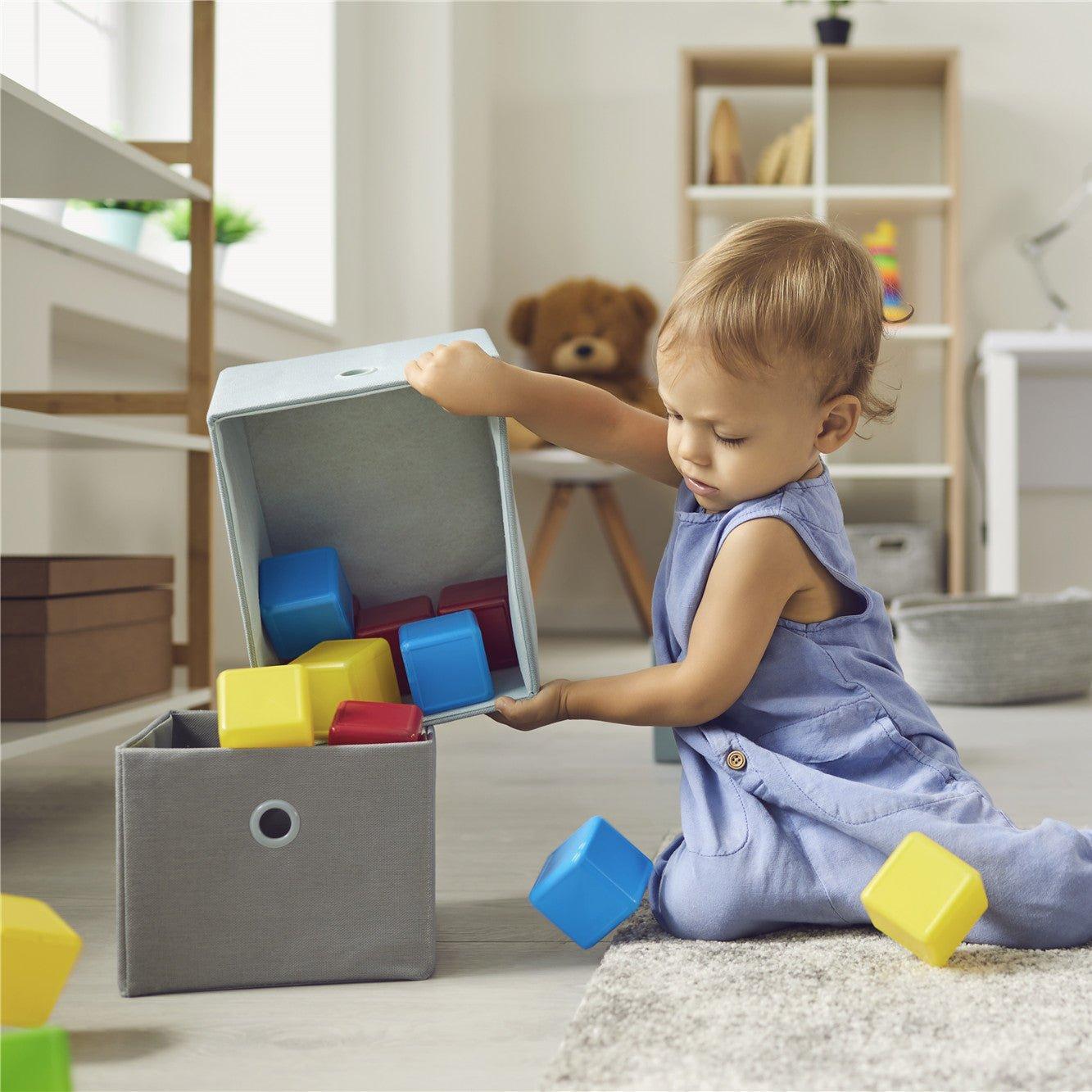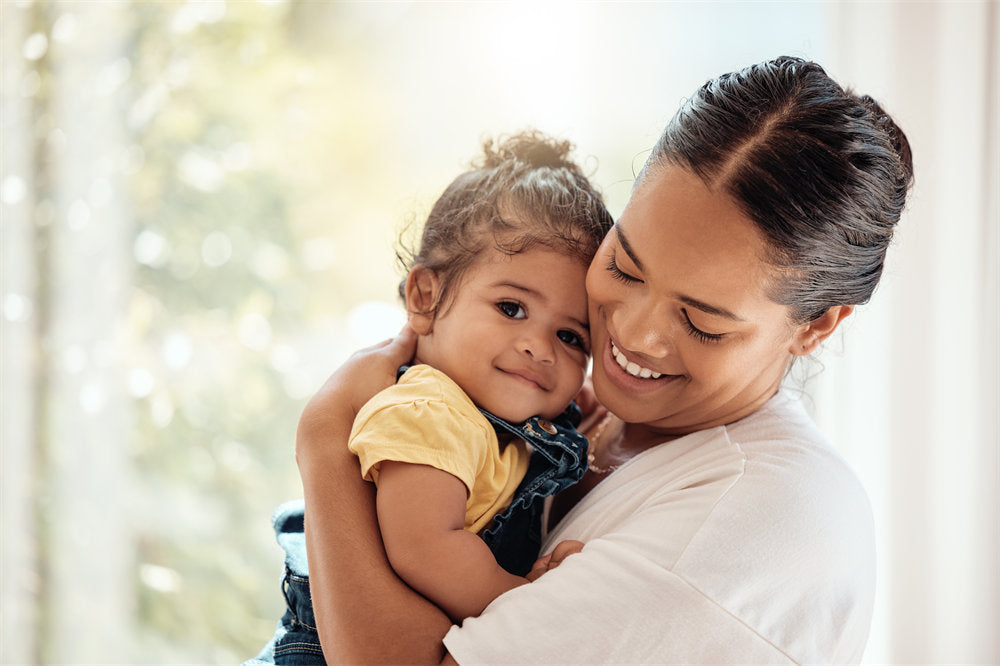 Just when you feel like you're starting to get the hang of this whole baby thing, your sweet baby turns one. He or she will soon be walking, using more words, employing new skills to get into trouble, and zeroing in on all the goodies you've hidden. With so much change happening at once, questions pop up.
Just when you feel like you're starting to get the hang of this whole baby thing, your sweet baby turns one. He or she will soon be walking, using more words, employing new skills to get into trouble, and zeroing in on all the goodies you've hidden. With so much change happening at once, questions pop up.
Questions first-time parents ask about their one-year-olds range from transitioning nap times to when and how to wean from breastfeeding to whether it's too early to start potty training. These are totally normal questions every parent asks at some point!
Narrowing down the hundreds of questions I asked at this stage with each kid was not an easy task!
1. When Should I Start Potty Training My One-Year-Old?
Most healthy one-year-olds are ready to begin potty training sometime between 18 and 24 months old, but some toddlers fight it tooth and nail until around three years old. Your child will be ready to begin potty training when he can walk, sit, pull down his pull-up, and communicate bathroom needs.

When your child is willing to be independent and please you by trying, he's ready to start potty training! But be careful about the way you act and react to his successes and failures because that will determine how potty training will go for the next few months.
Toddlers quickly realize they can only control two things: eating and using the bathroom. So, at a time when he's trying to become more independent, he may choose to be stubborn in these two areas.
How Should I Potty Train My One-Year-Old?
You can simply work with your child by setting her on the toilet before and after sleep and before meals or leaving home. Set a timer for three minutes and let your one-year-old watch the timer go down before she gets off the toilet.
Give her praise for "tactical wees" even if she doesn't pee in the toilet, but really praise her for successful potty runs. When she does pee herself, explain that it isn't her fault--accidents happen.
A method that is less child-oriented starts when the toddler understands when she is about to pee (approximately 20 months old), controls her own bladder, and can complete all the potty-training tasks herself (source).
In this method, you will teach your one-year-old bathroom phrases, show the difference between wet and dry pants, talk her through the process, show her the process, show her how to clean herself up, check her pants frequently, and make her sit on the toilet every fifteen minutes.
When she successfully pees in the toilet, make a big deal out of it. But if she pees herself, reiterate what she's supposed to do, withhold praise, and have her clean herself up (as taught).
Once she has a few successful runs, understands what to do, and communicates when she needs the toilet, space out the toilet times to 30 minutes, then an hour or more.
The latter method is more efficient, but some temperaments don't handle it well (too much pressure on the child or too much work for the parent). Either way, don't let your toddler tell you no and run away. She must try the toilet when you ask her to do so. Setting a timer she can see usually helps.
Is Regression Normal in Potty Training?
Yes, it is normal for your one-year-old to start peeing himself after having several days or weeks of successful potty training. The question is why. Sometimes, it is an attempt to control something or be stubborn. Other times, it may be a strong desire to keep playing and forgetfully wetting himself.
Whatever it is, the way you react will either reinforce the behavior, upset your child, or make him feel like he can tell you when he makes a mistake or has an accident. Be gentle and calm; it will help you and your toddler in the long run.
How Do I Train My One-Year-Old to Not Pee at Night?
Most potty trainers learn to go to the bathroom during the day or night and have accidents at the opposite time. For instance, my second never wet her diaper or the bed at night in potty training but struggled to make it to the toilet successfully during the day for months.
If your one-year-old chugs water in the evenings, wake her for a potty break before you go to bed. Once she has gone a few months without an accident, you can start waking her sooner and sooner in the evening until you don't have to wake her anymore. If she does have an accident, have her help clean up the mess.
But take a step back for a moment and think about this: is it more important for your toddler to sleep through the night without an accident or to be hydrated?
Asking her not to drink water at the end of the day so that she won't have an accident in her sleep doesn't compute in a toddler's mind. All she knows is that you are withholding water when she's thirsty.
So, instead of forcing your toddler to stop drinking water, you can wake her for a nighttime bathroom break or put her in a pull-up every night until it's not an issue anymore.
2. How Much Sleep Should My One-Year-Old Be Getting?
A one-year-old should get 11-14 hours of sleep per day between daytime naps and nighttime sleep (source). Though achieving that much sleep is challenging for some one-year-olds, it is possible to achieve it by setting a habitual pre-sleep routine and sleep training.

Setting a routine is perhaps the most powerful thing you can do to help your one-year-old settle into naptime and bedtime, even when sick or teething. We dove into the benefits of routines and how to build one specifically in The Ultimate Guide to One-Year-Old Sleep: Tips and Tricks for Busy Parents.
How Can I Get My One Year Old to Sleep Through the Night?
Getting your one-year-old to sleep through the night depends on the issue. Is he still breastfeeding at night? Is he hungry? Is he struggling with gas or dirtying a diaper? Perhaps he is being startled by new noises in a new place.
Once you have identified the issue, you can work on it. The basic checklist for all of these is the following:
full belly
clean diaper
fresh clothes
comfortable temperature
dark room
no unusual noises
a calming noise (box fan, noisemaker, voices in the next room)
no blankets wrapped around the body awkwardly
If all these requirements are met, check for ways to handle the specific issue. For gas bubbles, reduce the gassy foods he or you eat (baby food or breast milk) after midday and do leg exercises before bedtime, like walking around, crawling, or playing on the floor. Movement can help move that gas along before it builds up.
If your one-year-old is waking hungry at night, try adding a filling and healthy snack right before bedtime, like blended oatmeal, meat and veggie baby food, or a banana and milk smoothie. If waking hungry continues for another week, talk to your pediatrician.
Also, ensuring that you don't drink caffeinated drinks after lunchtime will knock out the chances that caffeine is in your breast milk. Other options are going for a walk or playing outside after dinner and before bedtime to wear your wee one out and ensuring no screen time or over-stimulating activities happen for an hour or two before bedtime.
How to Transition Your One-Year-Old to One Nap a Day
The key to transitioning your one-year-old to one nap a day is sticking to a pre-naptime routine, being consistent, keeping your child awake at other times, and ensuring everyone settles down for a quiet time.
Sure, busy one-year-olds can pass out anywhere when ready, but naptime makes more sense when everyone else at home settles down at the same time every day. It's not like she will miss out on all the fun if she takes that nap.
When transitioning from two naps to one, phase out of the first nap by reducing its time as your one-year-old can handle it and plan something stimulating to do during that first naptime. Typically, the morning nap is consolidated into a longer afternoon nap because that's when our circadian rhythm naturally dips during the day.
Don't worry; with consistency and patience, the transition to one nap will happen!
3. Are There Any Foods I Should Avoid Giving My One-Year-Old?
Honey must be avoided until one year old, but you may delay it until 18 or even 24 months old to be on the safe side. Honey contains a bacteria that can cause infant botulism in baby bellies, so it's best to avoid it until the toddler's gut microbiome has matured.
Other food to avoid includes anything your one-year-old can choke on, like grapes, chunks of meat, and raw carrots. Wait until your child's teeth have fully come in for these, or cut them into tiny pieces. Fish bones are also dangerous for one-year-olds, as they are fine and difficult to see.
4. Is It Normal for My One-Year-Old to Throw Tantrums?
Yes! Welcome to real parenting. The first year is much easier because you get to focus on keeping your baby alive, healthy, and happy. In the second year, though, you begin seeing free will, independence, and stubbornness. There's nothing like children to teach you patience!
But in all seriousness, it is normal for one-year-olds to have tantrums. They feel strong feelings that are not always tied to things they understand, like hunger and discomfort. Instead, one-year-olds feel mixtures of strong emotions and cannot always tell them apart.
So, the typical one-year-old feels big feelings, doesn't understand them, cannot explain them, and cannot control them. The result is a glorious meltdown in public after you said no to something on a shelf for the fiftieth time.
Just so you know, you're not alone; tantrums happen the most from 24-36 months but happen in 87% of 18-24-month-olds, too (source). As with everything as a parent, how you react and how safe your child feels with you physically and emotionally in their fragile state will determine how your one-year-old develops emotional regulation later in life.
5. Should I Be Worried that My One-Year-Old Is Not Walking Yet?
No! Most babies and toddlers learn to walk within 2-3 months of learning to stand, which is typically between 10-18 months of age. You can talk to your pediatrician if your toddler isn't walking by 15 months old.
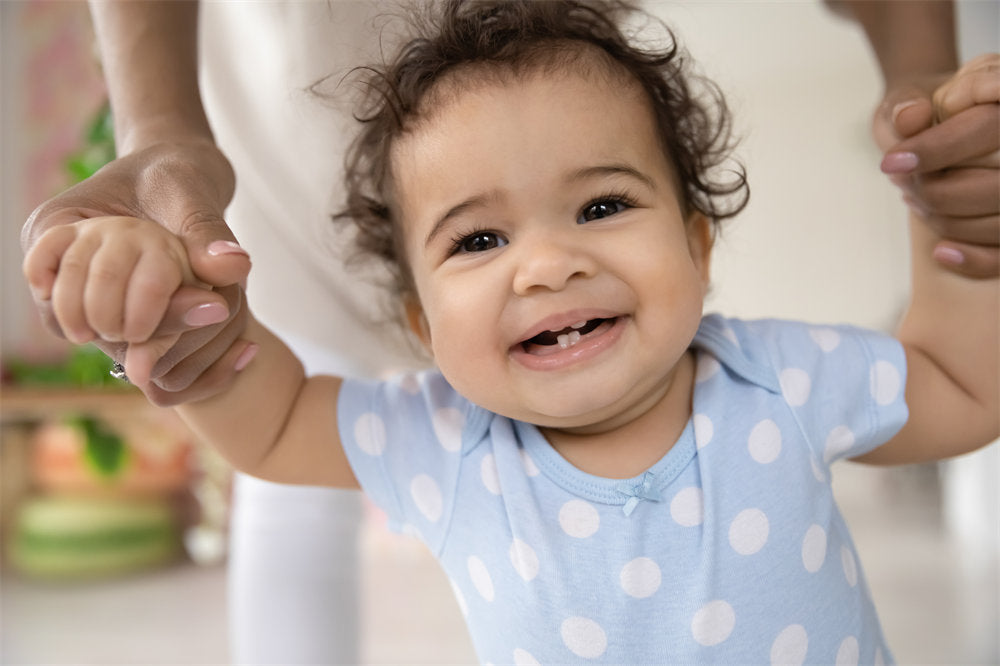
However, if she is pulling herself up, walking with walking toys, and cruising on furniture, walking independently is coming soon! But if your toddler is 15 months old and not doing any of those things, you should talk to your pediatrician to ensure no physical issue is hampering her progress.
How Can I Encourage My One-Year-Old to Walk?
Babies work into walking by following a process from rolling over, pushing up, standing on all fours, rocking, crawling, pulling up, cruising, and finally, walking.
Encouraging your one-year-old to walk can involve:
a push toy
holding his hand to walk together
calling him to you while he's already up and cruising on furniture
You can even space your furniture further apart so that he has to reach further and take a step.
6. How Much Should My One-Year-Old Talk?
Every child develops at her own pace, especially with talking. So many factors contribute to this, including how often parents spoke face-to-face with her in the first year, how often she heard adults speaking around her, how often she is now prompted to respond, and her unique personality.
Around her first birthday, your little one will understand a few words and signs for family members she sees daily or nearly daily and things she wants or needs often. She may even use repeated syllables to name some of those things (mama, dada, bubba, papa, gama) (source). But, these names will only be understood by you.
When Should I Be Concerned About My Toddler's Speech?
By 18 months, your child will pick up more vocabulary and know quite a few by 24 months. If he isn't using syllables purposefully by 18 months old, let your pediatrician know. If he remains quiet at 24 months old, your pediatrician may suggest a speech pathologist.
Many toddlers delay speech, especially if an older sibling speaks for them. It could be a hearing issue or simply feeling like he doesn't need to say anything.
7. How Can I Soothe My Teething One-Year-Old?
Soothe teething pain by giving your one-year-old a cold teething ring, a cool, wet cloth, or rubbing her gums with a clean finger. At Moonkie, we've designed high-quality, food-grade silicone teething rings with different patterns, textures, and shapes to help your child play and chew.
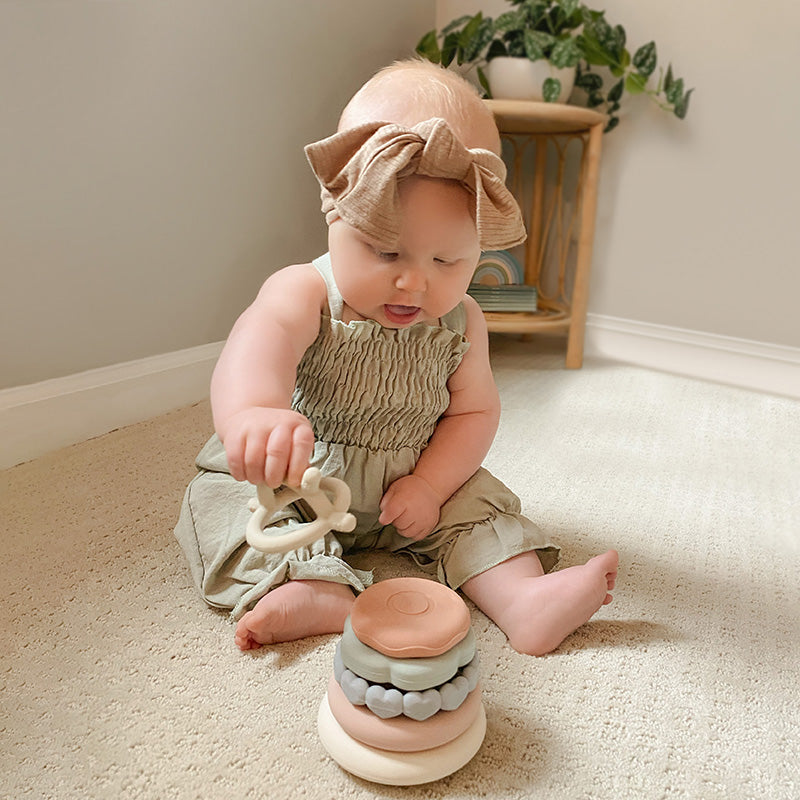
They are heavy-duty, durable, and long-lasting, too! Even better, you can chill them in the freezer before handing them to your baby and toss them into the dishwasher when she's done with them. We don't cut corners with our products!
If you're a bit apprehensive about silicone baby products, read Are Silicone Baby Teethers Safe? What You Need to Know.
When Should I Begin Taking My Child to the Dentist?
As soon as your child's teeth appear, you should begin brushing them with a baby-safe toothpaste and take him to the dentist. Call ahead to see if your dentist will work with children younger than 24 months, though.
Some dentists specialize in servicing toddlers and young children. If you are not sure, ask your pediatrician's office for phone numbers of toddler-friendly dentists in your area.
8. When Should I Switch My One-Year-Old to a Toddler Bed?
When your one-year-old begins climbing out of his crib or pack-and-play, it's time to transition him to a toddler bed. You can do this by switching either naps or bedtime sleeps to the new bed first or letting him help set it up and put a couple of favorite stuffed animals in it.
Some toddlers switch seamlessly in one evening, while others take their time. Both routes are okay. If your one-year-old is rolling out of the toddler bed, invest in a rail.
9. What Are Some Common Developmental Milestones for One-Year-Olds?
Common developmental milestones for one-year-olds include walking, adding more syllables, growing vocabulary for toddler-speak and sign language, learning social skills, expressing new emotions, and understanding routines and daily questions and statements you make to her.
Physically, one-year-olds continue refining their fine and gross motor skills so that running, jumping, balancing, climbing, coloring, holding pencils with fingers instead of fists, stacking toys, and putting multiple things together become daily habits.
Mentally, one-year-olds begin to grasp cause and effect, remember and act on memories, memorize animal sounds, and problem-solve. So, if your twenty-two-month-old begins moving furniture to reach things up high, smile because she's using problem-solving skills!
10. How Can I Encourage My One-Year-Old to Be Independent?
You shouldn't have to do much for most one-year-olds because they'll take off on their own! However, if your one-year-old is extremely clingy and always needs you in sight, you can do a few things.
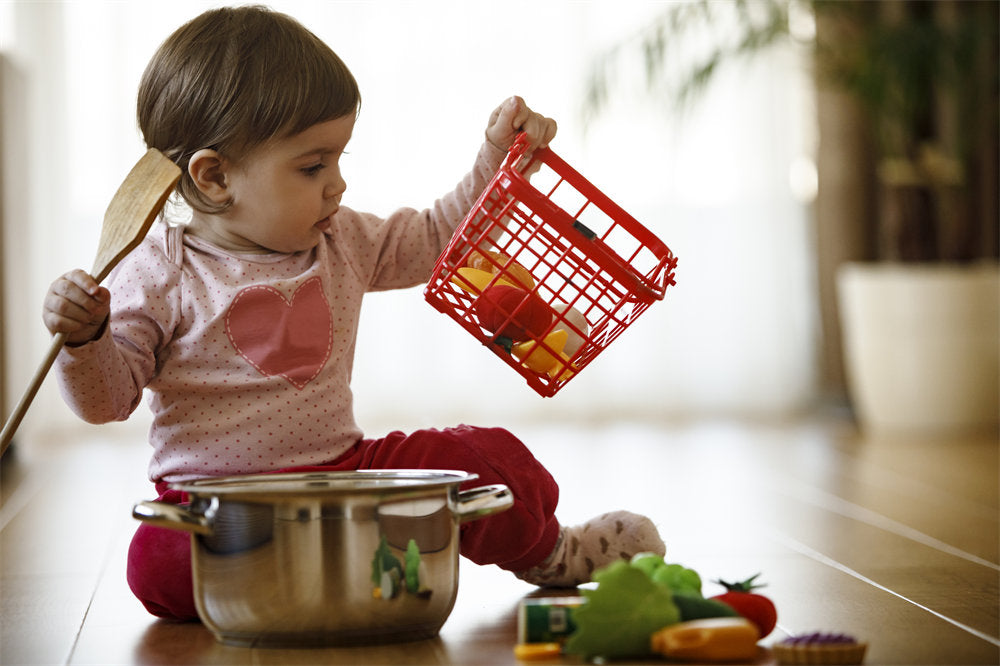
One thing you can do is not pick up your one-year-old every time he asks. Talk to him, look him in the eye, and assure him that you will pick him up soon, but not immediately (best to do while you're doing something).
Another thing you can do is let him play with open-ended toys or look at books for short spurts of time by himself. Praise him for whatever he accomplishes in that time, sit and play for a few minutes, and then get up to do something else.
As you go, increase the time you are not sitting with your child. Before long, he'll go for twenty or thirty minutes!
11. What Are Some Good Ways to Discipline My One-Year-Old?
Disciplining a one-year-old looks different from family to family. Moreover, various temperaments respond to types of discipline differently. The foundation of all discipline is your temperament in delivering discipline.
Don't yell, harm your child, shame her, drag her, push her, wrench her arm, squeeze her hard, or slap her. These actions cause toxic stress in the child, which can affect brain development and definitely affect social and emotional development.
Instead, remain calm. If you cannot, put your child in a safe place (playpen, pack-and-play, crib), set a timer they can see, and step out to cool off. How you handle yourself when your child crosses a line or breaks a rule significantly shapes how she will regulate herself and treat others later in life.
How you carry out discipline needs to fit the "crime" but should also be understood by the one-year-old. Timeouts, firm pats on the butt for getting attention, gently slapping a hand away from something dangerous, or taking a toy being fought over away are all appropriate punishments understandable for one-year-olds.
Letting the one-year-old see the timer go down (a bar or a circle reducing), using a "trouble chair," and being consistent with the rules and punishments are helpful as well.
12. How Can I Get My One-Year-Old to Drink More Water?
If your one-year-old struggles with hydration, consider switching bottles, taking timed water breaks, or giving a snack that makes your child want to drink something (crackers, popcorn).
Another thing you can do is reduce any other kind of drink your one-year-old prefers. For example, don't give him sugary teas and juices. Water is better for him anyway! You can also try adding lemon or frozen fruit to the water for him to try.
13. When Should I Start Teaching My One-Year-Old to Use Utensils?
Ideally, your one-year-old will have already been practicing using utensils, but if she's not doing so yet, let her have them! It will be messy, but using utensils is a crucial skill for one-year-olds to practice for fine motor skill development.

You can use Cheerios or puff snacks in a clean bowl with a spoon for easier cleanup on busy days. If you are worried about the plastic or metal spoons in most stores these days, check out our soft silicone baby feeding set!
14. What Are Some Good Ways to Encourage My One-Year-Old to Share?
Sharing is an incredibly difficult social skill for one-year-olds to learn! However, they will do what they see you do. So, making a point of sharing with your little one and other friends and family and making a big deal of it will show your one-year-old how to share and encourage it.
Next, provide opportunities for your child to share by asking, "Can I have one?" When he hands you something, smile and say, "Thank you so much for sharing this with me! It makes me happy. You are so sweet!"
Between kids, though, this is a challenge. Older kids snatch toys out of little kids' hands. Making a point of getting onto those older kids and having them "make it right" is crucial for showing your one-year-old the rules of the game they should be playing.
When another child wrongs your one-year-old, comfort him and help him think of something else to play with.
15. How Can I Help My One-Year-Old Develop Good Manners?
By having good manners! Young children learn social skills using a "monkey see, monkey do" method, and one-year-olds can soak everything you do in. From your facial expressions to tone of voice to body language, your one-year-old studies you when you talk to someone else.
Even if it doesn't look like it now, you will see your toddler mimic your mannerisms in the next couple of years. You have a "mini-me" watching, so have good manners with others and your child.
When your one-year-old does something rude purposefully (throwing food, slapping others, snatching, etc.), say, "No, we don't do that," and correct her.
16. What Are Some Good Ways to Help My One-Year-Old Understand Cause and Effect?
The best way is to let your one-year-old figure it out himself. This is what makes Montessori or sensory toys so ingenious; they are designed to let children learn by exploring the activity and figuring it out themselves.

Recognizing cause and effect relationships is a crucial skill Montessori kids learn to observe through play. For more on Montessori and sensory toys, read Are Montessori and Sensory Toys the Same Thing?
17. How Can I Help My One-Year-Old Develop a Good Attention Span?
Helping your one-year-old develop a good attention span is more about what you don't do at first. For instance, using screens to babysit your one-year-old while you get something done is a recipe for instilling a short attention span for anything else in your child. It eventually makes entertainment and novelty necessary.
Your child's attention span will increase naturally as her cognitive abilities increase. If screens and overstimulating toys and activities don't stunt that natural development of focus, she will be able to focus on books and open-ended toys better and better.
So, giving your child those open-ended toys and activities, reading to your child every day, and keeping screen time at an hour or less will help your one-year-old develop a good attention span.
18. When Should I Start Teaching My One-Year-Old About Colors and Shapes?
Right away! Teaching your child about colors and shapes can actually happen well before his first birthday, but it won't sink in cognitively until sometime after 18 months old or even after 24 months for some children. Hearing shape and color names regularly helps your child learn them.
"Teaching" is not lecturing or testing your one-year-old; it's more like "naming" or "describing" shapes and colors as your little one plays with them. One of my favorite games was naming everything we could see with that color. I started this with twenty-month-olds, but consistent answers only came around 24 months.
19. How Often Should I Be Bathing My One-Year-Old?
This depends on how dirty your one-year-old gets! Some toddlers run around outside a lot, have pets, or find ways to get messy and need that nightly bath. Other toddlers are fairly chill and don't need a bath every evening.

Sometimes, you can alternate by seasons: daily baths when it's hot and baths every other day in the winter. If your child has psoriasis or eczema, you'll find that this bathing schedule is not so simple.
20. How Can I Help Control My One-Year-Old's Eczema?
Eczema is a dry, itchy skin condition that affects patches of skin. It's uncomfortable and causes your little one to itch and scratch, even to the point of bleeding. The more it's itched, the worse it gets. Obviously, one-year-olds don't understand this.
Controlling your one-year-old's eczema starts with talking to your pediatrician or dermatologist, who will likely prescribe a steroid cream, take fewer baths, and instruct you to put gloves on your toddler when he sleeps to minimize scratching.
A long-term strategy for preventing breakouts is changing soaps and detergents. Throw out any soaps, shampoos, and detergents that you use with fragrance oils, dyes, sulfates, and additives. Replace them with fragrance-free or natural ingredients. I go over this more in-depth in Going Green: How to Create a Sustainable Home for Your Family.
21. Is It Okay to Let My One-Year-Old Sleep with Me?
Yes and no. In some cultures, it is normal for children to sleep with their parents for years. However, co-sleeping is dangerous in your own bed because you could roll onto your child. Co-sleeping regularly could also lead to your toddler resisting falling asleep by herself.
When your toddler struggles to sleep due to congestion, fever, or coughing, letting her fall asleep with you may be needed, but only do so in a recliner or some other seat you won't try to roll over in.
22. How Much Sugar Can My One-Year-Old Have?
It turns out that children under two years of age should NOT have added sugars at all (source). For one, babies and toddlers eat so little at a time, and they are growing so much that they need quality calories, not empty surges of energy.
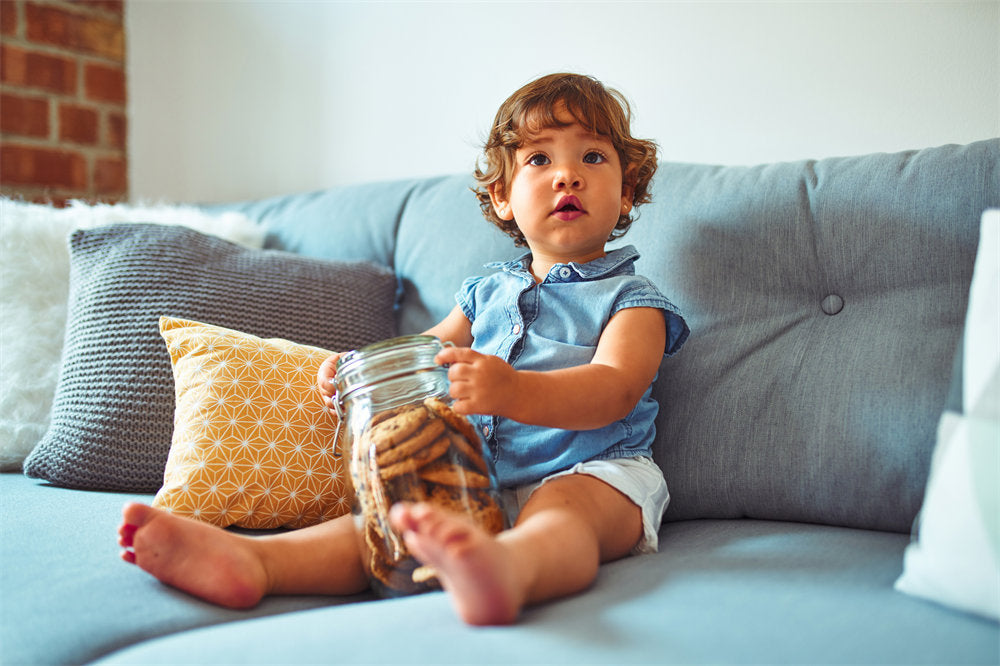
For another, processed sugar is something we all crave and struggle to control as adults, so we should probably be wary of giving it to toddlers who haven't learned self-control yet.
23. Should I Stop Using a Chest Carrier to Carry My One-Year-Old?
Every chest carrier comes with a weight limit, which is typically 18-20 pounds for a light carrier and 35 pounds for a sturdier one. Another thing to check is height and circulation. If your one-year-old is lanky and long, you may find it uncomfortable to have her sitting in the carrier.
On the other hand, if her legs grow cool quickly in the carrier, then it may be time to retire it and switch to a stroller.
24. Is Screen Time Okay for My One-Year-Old?
Babies and toddlers before three years of age should have no more than an hour of screen time in a day, and less or none at all is even better. It turns out that despite what marketing tells parents, babies and toddlers don't learn well from someone on a screen (source).
Little kids and babies don't pick up on the slight facial cues and body language in real life as well when they are accustomed to the much more emphatic cues they see on screens. But no one talks like that in daily life, so subtle "normal" cues simply go over screen babies' heads.
I know the TV is a lifesaver during the most hectic times of day, but opting for open-ended playtime toys is far more helpful to your one-year-old in the long run.
25. Does My One-Year-Old Understand When I'm Upset, Angry, or Overwhelmed?
Yes, your one-year-old understands that something is off when you are upset, angry, or overwhelmed. He won't understand why, what caused it, or how to act around you during such episodes, but he can tell you are not acting like yourself.
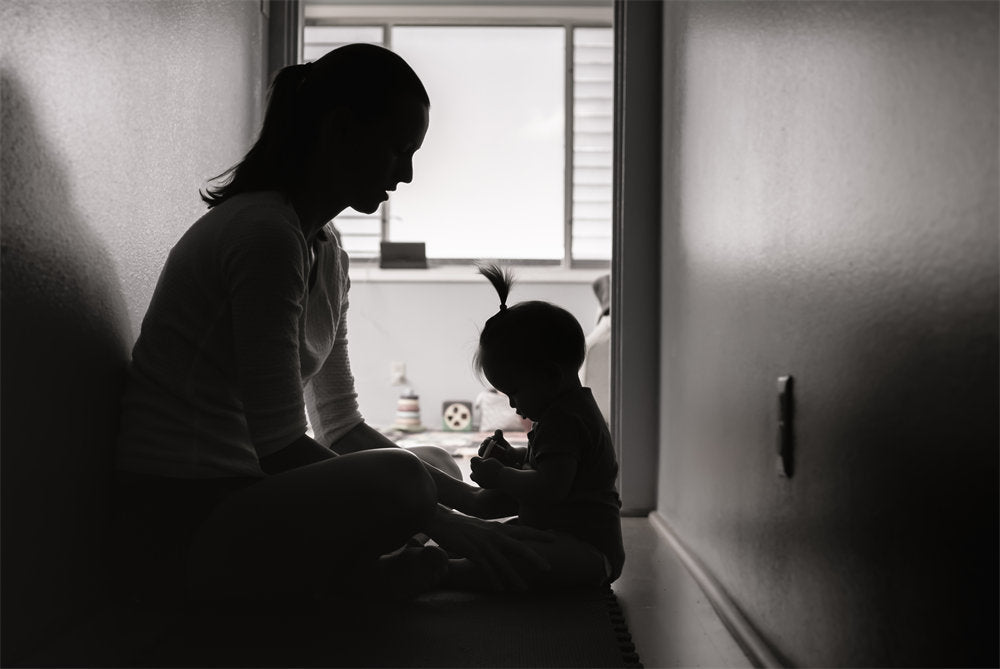
So, you must maintain self-control and avoid lashing out or blaming your one-year-old for not giving you a break. He has no way of knowing how to act appropriately in these situations, and he may even cry, fuss, or demand more of your attention when you are upset about something else.
The thing is, you are your one-year-old's comfort. So, when you are not comforting, the only one he can turn to is you. It's not manipulation or selfishness; it's feeling uneasy and needing to know he is safe with you.
In a Nutshell
There you have it! 25 questions first-time parents ask and that even seasoned parents may ask now and then when a second or third child surprises them with originality. Parenting a one-year-old is very different from the first year, but it is one packed with memories, milestones, and funny moments. Enjoy it!

